Making a pinch pot is a fascinating technique that has been cherished for centuries. Imagine being able to transform a simple ball of clay into a functional and beautiful vessel using only your hands and a few basic tools.
As you mold and sculpt the clay with your fingertips, each pinch carries with it a sense of closeness and personal touch that sets pinch pots apart from other forms of pottery. This article explores everything about how to make a pinch pot, providing step-by-step guidance to create a unique piece that blends tradition with modern artistic expression.
What Is A Pinch Pot?
One of the most fundamental techniques in hand-building pottery is creating a pinch pot. This method involves using your hands to mold and shape a piece of clay, typically starting with a small ball that is pinched and formed into the desired shape. Pinch pots are versatile in their design potential, allowing for endless creativity in creating bowls, cups, or decorative shapes.
The other types of hand-building are coil pots and slab building. If you want to learn more about hand-building, check out our article “Handbuilding Pottery – A Complete Guide”.
How To Make A Pinch Pot
To make a pinch pot, choosing the right clay is crucial. Opt for a clay that is suitable for hand-building to ensure your pinch pot turns out sturdy and well-formed. It’s essential to prepare the clay properly by wedging it to remove air bubbles and make it more workable. This step sets a good foundation for creating your pinch pot effortlessly.
When forming the pinch pot, remember to start with a small ball of clay and gently press your thumb into the center while using your fingers to pinch and shape the walls evenly. Avoid rushing this process as patience is key to achieving a symmetrical and balanced form. Pinch clay between fingers to sculpt intricate pottery designs. Be mindful of maintaining consistent thickness throughout the pot to avoid weak spots that may crack during drying.
Picking The Right Clay
When you are going to create beautiful ceramic pinch pots, choosing the right clay is crucial. One important factor to consider is the firing temperature of the clay. High-fire stoneware clay is a popular choice for its durability and resistance to high temperatures, making it ideal for functional pottery pieces.
If you are looking to create delicate and intricate designs, low-fire earthenware clay may be more suitable due to its softer texture and lower firing temperature.
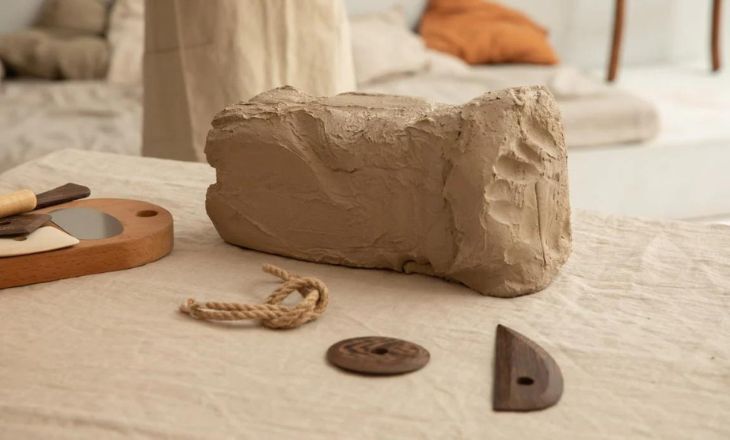
A key consideration when selecting clay for ceramic pinch pots is the color and texture of the finished piece. Different clays have unique properties that can affect the final appearance of your pottery. For example, porcelain clay creates a smooth and translucent finish, while red earthenware clay produces a rich, earthy tone.
We wrote a whole article about it. You can read “How to choose pottery clay for your next project” at the link.
Preparing The Clay For The Project
An important aspect of preparing the clay is selecting the right canvas board to work on, as it serves as the foundation for your project. A sturdy canvas board not only provides stability but also enhances the durability of your artwork.
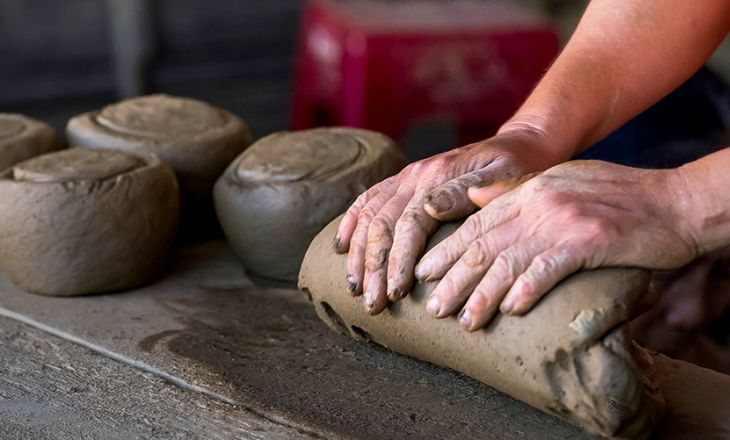
Taking time to properly condition the clay before shaping it can make a significant difference in the overall outcome of your project. By kneading and rolling out the clay thoroughly, you ensure that it is free from air bubbles and has a consistent texture throughout. It prevents cracking or uneven drying during the firing process.
Check out our article “How To Wedge Clay” for more on getting your clay ready.
Forming The Pinch Pot
- Create a small ball of clay.
- Once you have formed your small ball of clay, gently press your thumb into the center to create a deep indentation.
- Slowly start pinching the sides of the clay ball with your fingers, working your way around in a circular motion.
- Feel the clay between your fingers as it gradually takes on the shape of a bowl or pot.
- Pay attention to the thickness and symmetry of the walls as you continue to pinch and shape.
- As you pinch and mold, consider how each movement affects the form and function of the pot.
Crafting a pinch pot is not just about shaping clay, but also about ensuring the structural integrity of the vessel. A good rule of thumb is to aim for a thickness at least as wide as a pinky finger or slightly more once the pinch pot is complete. This thickness will provide stability and durability to the vessel, allowing it to withstand handling and firing processes.
To store your unfinished pinch pots for later work, maintaining moisture in the clay body is crucial. Storing the piece in an airtight environment such as a plastic bag helps to prevent drying out and cracking. Lightly spraying water on the vessel before sealing it can keep the clay moist and malleable while stored.
Things To Avoid When Making A Pinch Pot
When making a pinch pot, the two main things to avoid are pulling the clay too forcefully and pushing it too far.
- Don’t Pull: Sometimes the temptation to stretch the clay can result in a misshapen or weakened structure.
- Don’t Push Too Far: Pushing too far can lead to thin spots or even accidental holes in your creation.
It’s crucial to maintain control and awareness of how much pressure you’re applying while pinching the clay. Gentle pressure and gradual shaping are key to creating a durable pinch pot.
Drying And Hardening
After the initial shaping and molding of the pot, allowing it to dry gradually is essential to prevent cracking or warping. Some artists prefer to cover their pots with a damp cloth periodically during the drying process to ensure even moisture distribution.
Once the pot is completely dry, it is ready for firing in a kiln, which is where the magic happens. The intense heat of the kiln transforms the once malleable pot into a hardened, durable piece of art. The firing process also allows for vibrant glazes to be applied, enhancing both aesthetics and functionality. Mastering the balance between drying and hardening is crucial in achieving stunning results with ceramic pinch pots.
Decorating The Surface
Decorating the surface of a piece is where an artist can truly showcase their creativity and unique style. One interesting technique to try is pinching clay to create intricate patterns and textures. By carefully pinching and shaping the clay, artists can add depth and visual interest to their work, making each piece one-of-a-kind.
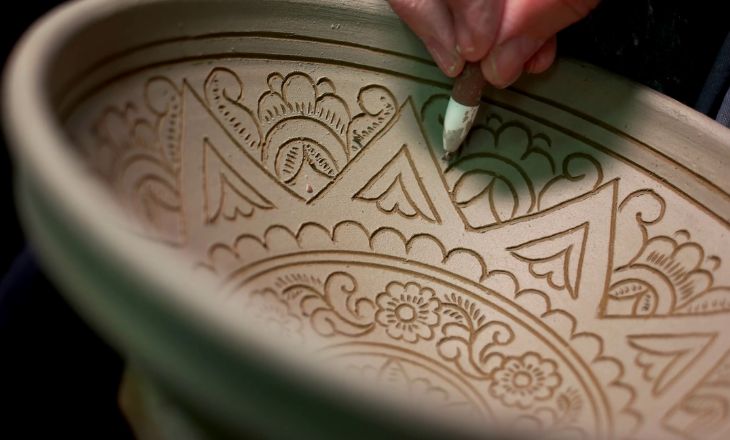
An exciting way to decorate the surface is by experimenting with various glazes and finishes. From glossy surfaces that catch the light to matte textures that invite touch, choosing the right finish can completely transform the look and feel of a piece.
Creative Pinch Pot Ideas For Beginners
The process of molding and shaping clay with your hands allows for a deeper connection with the material, inviting you to explore your creativity in ways you never imagined. As you master the basic techniques of forming clay, each pinch pot project serves as a canvas for experimentation and self-expression.
Pinch Pot Mugs
Crafted with hands that mold, shape, and caress the clay with tender care, pinch pots offer a grounding connection to the earth through their organic form. The process of creating these mugs involves a slow dance between the potter’s fingers and the raw material, resulting in unique vessels that carry traces of human touch. Each pinch pot mug tells a story through its imperfections and irregularities, inviting users to embrace the beauty found in flaws.
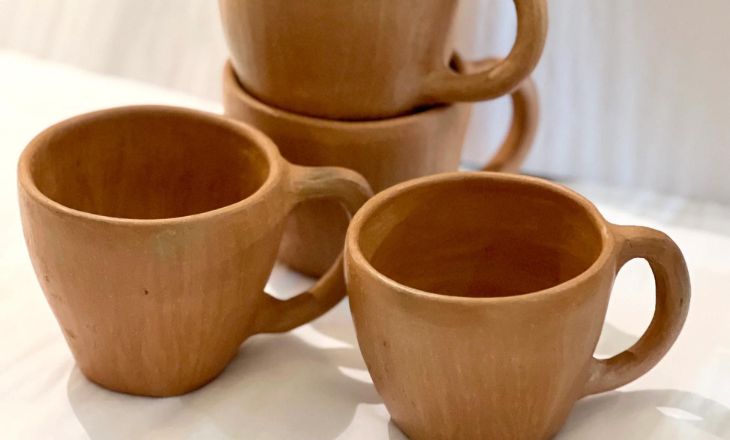
As your fingers wrap around the uneven surface, you can’t help but feel connected to the maker’s creative energy that flows through every curve and crevice. With each sip taken from these handcrafted mugs, one can savor not just the beverage within but also appreciate the craftsmanship and soulful essence contained in their humble clay walls.
Succulent Planters
Succulent planters have become a popular trend in modern home decor, adding a touch of greenery and elegance to any space. The beauty of succulent planters lies in their versatility – they can be arranged in various shapes, sizes, and colors to create eye-catching displays.
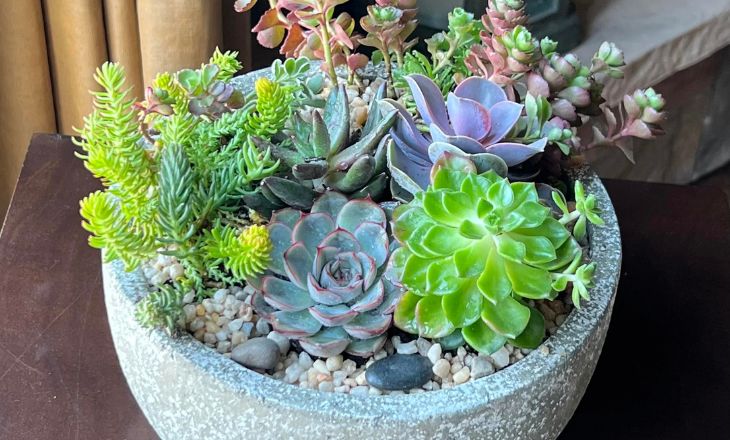
These are easy to care for and require minimal maintenance, making them perfect for busy individuals looking to add a green touch to their homes without the hassle of frequent watering.
Jewelry Tray
A jewelry tray is not just a storage solution; it is a statement of style and organization. Imagine your favorite pieces carefully arranged on a luxurious velvet-lined tray, each shining with its unique brilliance. Such a simple accessory can transform clutter into elegance, making your daily routine feel like a glamorous affair.
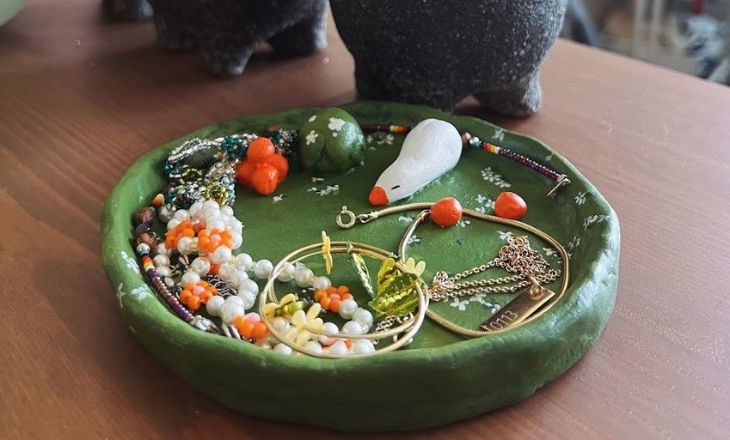
This not only helps you find the right piece effortlessly but also prevents tangling and damage—keeping your treasures safe and secure in one place.
Looking for more ideas? Check out our article “21 Pottery Ideas for Beginners.”
Conclusion
Making a pinch pot is a delightful and straightforward method that bypasses the need for a potter’s wheel or bulky gear. Creating a ceramic pinch pot is a rewarding and accessible craft that can be enjoyed equally by beginners and experienced artists. Its simplicity makes it an ideal introduction to the world of pottery, allowing for endless possibilities of creativity and expression.
While pinch pots are a fantastic starting point, there are countless other techniques and styles to explore within the realm of ceramics. So, grab some clay, get your hands dirty, and let your imagination run wild as you delve deeper into the ancient art form of pottery.
FAQ’s
Can You Make Pinch Pots Without A Kiln?
Yes, you can make pinch pots without a kiln. Pinch pots are a type of pottery that is shaped by pinching and molding the clay with your fingers. Firing the pot in a kiln gives it strength, you can use alternative methods such as baking it in an oven or even using a blowtorch to cure and harden the clay.
What Material Is Used For Pinch Pots?
Pinch pots are typically made using clay or pottery material. Clay is a versatile and easily moldable material that is perfect for creating pinch pots. It can be manipulated and shaped easily with just your fingers.
Use earthenware or stoneware clay as these types of clay have good plasticity, allowing them to hold their shape well when pinched and molded.
What Kind Of Clay Is Used For Pinch Pots?
Pinch pots are typically made using a type of clay called earthenware clay. Earthenware clay is soft and pliable, making it easy to shape and mold with your hands when creating pinch pots. It is fired at a lower temperature compared to other types of clay.
